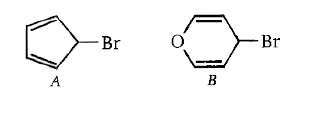Which statement is correct regarding man-made ecosystems ?
1 They are highly efficient
2 They are poor in diversity
3 They are vulnerable to drought, floods and diseases
4 All are correct
They are highly efficient
They are poor in diversity
They are vulnerable to drought, floods and diseases
All are correct
To determine the correct statement regarding man-made ecosystems, let's analyze each option step by step:
Step 1: Understand Man-Made Ecosystems
Man-made ecosystems, also known as artificial ecosystems, are environments that have been created or significantly altered by humans for specific purposes, such as agriculture, aquaculture, or urban development. They are different from natural ecosystems, which develop without human intervention.
Hint: Consider the definition and characteristics of man-made ecosystems before evaluating the options.
Step 2: Evaluate Option 1 - "They are highly efficient"
This statement suggests that man-made ecosystems operate with high efficiency. However, while they may be designed for specific outputs (like crop production), they often lack the stability and resilience found in natural ecosystems. Therefore, this statement is not correct.
Hint: Think about the stability and resilience of ecosystems when considering efficiency.
Step 3: Evaluate Option 2 - "They are poor in diversity"
Man-made ecosystems typically have lower biodiversity compared to natural ecosystems. This is because they often focus on a limited number of species that are economically beneficial, leading to a lack of variety in species. Thus, this statement is correct.
Hint: Reflect on the species variety in man-made versus natural ecosystems.
Step 4: Evaluate Option 3 - "They are vulnerable to drought, floods, and diseases"
While it is true that man-made ecosystems can be vulnerable to environmental stresses such as droughts and floods, this statement is more about the impact of specific events rather than a defining characteristic of man-made ecosystems. They can be designed to mitigate some risks, but they are still susceptible to these threats. However, this vulnerability does not define them as a whole.
Hint: Consider how man-made ecosystems respond to environmental challenges compared to natural ecosystems.
Step 5: Evaluate Option 4 - "All are correct"
Since we have determined that Option 1 is incorrect and Option 2 is correct, this option cannot be true. Therefore, not all statements are correct.
Hint: Review the individual correctness of each option before concluding on this one.
Conclusion
After evaluating all options, the most accurate statement regarding man-made ecosystems is Option 2: They are poor in diversity.
Final Answer
The correct answer is: 2. They are poor in diversity.
Man-made ecosystems, also known as artificial ecosystems, are environments that have been created or significantly altered by humans for specific purposes, such as agriculture, aquaculture, or urban development. They are different from natural ecosystems, which develop without human intervention.
This statement suggests that man-made ecosystems operate with high efficiency. However, while they may be designed for specific outputs (like crop production), they often lack the stability and resilience found in natural ecosystems. Therefore, this statement is not correct.
Man-made ecosystems typically have lower biodiversity compared to natural ecosystems. This is because they often focus on a limited number of species that are economically beneficial, leading to a lack of variety in species. Thus, this statement is correct.
While it is true that man-made ecosystems can be vulnerable to environmental stresses such as droughts and floods, this statement is more about the impact of specific events rather than a defining characteristic of man-made ecosystems. They can be designed to mitigate some risks, but they are still susceptible to these threats. However, this vulnerability does not define them as a whole.
Since we have determined that Option 1 is incorrect and Option 2 is correct, this option cannot be true. Therefore, not all statements are correct.
After evaluating all options, the most accurate statement regarding man-made ecosystems is Option 2: They are poor in diversity.
The correct answer is: 2. They are poor in diversity.
Topper's Solved these Questions
- ECOSYSTEMBOOK - VMC MODULES ENGLISHCHAPTER - ECOSYSTEMEXERCISE - ENABLE
50 Videos
- ECOSYSTEMBOOK - VMC MODULES ENGLISHCHAPTER - ECOSYSTEMEXERCISE - EFFICIENT
49 Videos
- BIOTECHNOLOGY AND ITS APPLICATIONS BOOK - VMC MODULES ENGLISHCHAPTER - BIOTECHNOLOGY AND ITS APPLICATIONS EXERCISE - IMPECCABLE
51 Videos
- EVOLUTION BOOK - VMC MODULES ENGLISHCHAPTER - EVOLUTION EXERCISE - IMPECCABLE
54 Videos
Similar Questions
Knowledge Check
Which of the following statements regarding the electron spin +12and−12 is correct? These two numbers
Arepresent the rotation of electron in clockwise and anticlockwise directions respectivelyBrepresent the rotation of electron in anticlockwise and clockwise directions respectivelyCrepresent the upward and downward directions of magnetic moment.Drepresent two quantum mechanical states which have no classical mechanical analogues.Which of the following statements is correct regarding the rate of hydrolysis of the compounds (A) and (B) by SN2 reaction ?
 AA reacts faster than BBB reacts faster than ACBoth A and B reacts at the same rateDNeither A nor B reacts
AA reacts faster than BBB reacts faster than ACBoth A and B reacts at the same rateDNeither A nor B reacts
Which of the following statement is correct about ethane 1,2
diamine ?
View SolutionWhich one of the following statements is correct regarding sexually Transmitted Diseases (STD)
View SolutionWhich of the following statements regarding 1,3- dimethyl cyclobutane is/are correct?
View SolutionWhich of the following statements regarding 1,3- dimethl cyclobutane is/are correct?
View Solutionwhich of the following statements regarding Psi^2 is not correct?
View SolutionWhich of the following is correct regarding the ecosystem?
(a) There is cyclic exchange of materials between living beings and environment.
(b) The flow of energy is unidirectional
(c) It is a self-regulating unit
(d) All of these
View Solution
